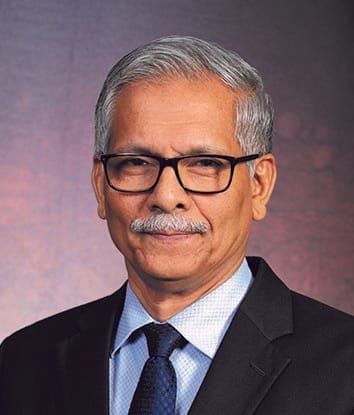An insight into Indonesian maritime

India and Indonesia have started working on Maritime Diplomacy with exchange of naval ship visits and exercises in Indian Ocean waters.
India and Indonesia need to upgrade current coastal vessel trade in the eastern Indian Ocean for which the two countries have initiated bilateral connectivity between the southern-most Indian islands and resource-rich northern Sumatra. (https://www.fiinews.com/india-indonesia-need-build-shipping-link/)
Indonesia’s KN Tanjung Datu 301 recently paid a port visit to Port Blair, the closest neighboring India’s island to the western-most Indonesia’s island of Sabang in Aceh province.
Indian naval ships had paid a visit to Indonesia’s Sabang port, facing Andaman Sea and off Aceh province of northern Sumatra.
These exchanges are aimed at getting Indonesian participation in the Indian Ocean as well as having the Indian Navy help Indonesia build its maritime capacity and capability.
India and Indonesia feel that Sabang should be developed into a maritime hub.
With the visit Bakamla, the Indonesian Maritime Security Agency, is trying to show that it is also engaged in the maritime diplomacy.
So far, the port visit as a maritime diplomacy practice is mainly carried out by the Indonesia Navy (TNI AL) and India is one of the friendly countries being visited frequently. Not only the courtesy call, TNI AL also regularly participates in the naval games hostby the Indian Navy.
Siswanto Rusdi, the Director of National Maritime Institute (NAMARIN) gives an overall view of and looks at the Indonesian government’s vigor to establish the Indonesia Coast Guard (ICG), which could be with the help of India.
Since the order was sanctioned by Law No. 17/2008 on Shipping, Ministry of Transportation, as the government agency in charge of the establishment of ICG as regulated by the law, has been continuously failed to implement the order.
On the other side, Indonesia really needs a coast guard to improve its law enforcement at the sea which is currently is carried out by a number of agencies.
The jurisdiction of these agencies is overlapping and causing confusion among shipping players that often ends up at the act of corruption involving massive amount of bribery money. It is where such hopeless is rooted.
Of course, the ministry has not without any effort to fulfill its mandate. A scores of drafts for the establishment of the office have been prepared, discussed and submitted to the President for approval.
But they were sent back for rectification, reflecting a political wrestling among the local authorities that have jurisdiction in the maritime domain.
Amidst the situation, Badan Koordinasi Keamanan Laut (Bakorkamla) or Maritime Security Coordinating Body, the predecessor of Badan Keamanan Laut/Maritime Security Body, splintered and proclaimed itself as the Indonesia Coast Guard by virtue of Law No. 32/2014 on Maritime Affairs. Another maneuver, which creates more despair than hope, is to have a single law enforcer at the national waters.
Bakorkamla’s decision was quite regretted since it was a constituent part in the establishment of ICG under Law No. 17/2008 on Shipping together with Kesatuan Penjagaan Laut dan Pantai (KPLP), a director-level unit within Ministry of Transportation that is so far publicly accepted as the country’s coast guard.
According to the law, Indonesia Coast Guard is established by the merger of Bakorkamla with KPLP. The new position Bakorkamla has taken provisions in the Shipping Law pertaining to the establishment of ICG is grossly unlikely.
That’s why when the former Minister of Transportation Ignasius Jonan wanted to establish ICG he had just planned elevating KPLP to a director-general position within the ministry. The idea of course was criticised because ICG is not the institution’s subordinate; it directly reports to the President and its head has a minister-level status.
As for Law No. 32/2014 on Maritime Affairs, the legal basis on which Bakamla is constructed, it is basically dealing with a very extensive ocean or maritime dimension.
Off 74 chapters, provisions relating to the organization in question is 18% (11 chapters). Additionally, those chapters were inserted later for the initial draft of the law did not contain them at all.
In Indonesia’s legal system, to enact a new institution/agency which is ordered by a law, a scores of regulation should be in place. For example, in hierarchical order, below a law there is a government regulation, or Peraturan Pemerintah (PP) in local parlance. Next is the Presidential Order or Perpres.
In case of Bakamla, there is no PP issued by the government until now. The agency only has a Perpres (PP No. 178/2014) signed by President Joko Widodo two months after his presidency officiated, dated 8 December 2014. That’s why the high-ranking employees holding deputy position are designated as the acting official.
It is interesting to note that although the term of Bakamla is translated into English as coast guard, and their personnel consequently consider themself as coast guard, but no single word of coast guard can be found in Law No. 32/2014 on Maritime Affairs. The agency presently is submitting a bill on Maritime Security to boost its muscle to the Parliament.
In terms of assets, Bakamla controls several patrol boats and stations across the nation. The biggest patrol boat is KN Tanjung Datu 301 (KN stands for Kapal Negara or State Ship, a designation for non-combatant vessel) with a 110-meter lenght over all and manned by 40 crews.
Bakamla has 10 vessels and plans to add 30 more vessels in the future. To cover the wide expanse of Indonesia’s water territory, it operates Maritime Regional Crisis Center and Regional Maritime Center established natiowide whose main task is monitoring the existing Indonesia Archipelago Sealanes. These facilities are equipped with radar, AIS, and long-range camera.
With the visit by Bakamla’s largest vessel to Port Blair, it seems that the agency is eagerly paving the way to cooperate, at a certain level and learn more closely from the Indian maritime security authorities, i.e. the India Coast Guard, as one of the best law enforcer at the sea in the Indian Ocean.
Additionally, it also reflects Indonesia’s growing focus on the ocean which is quite untouched by the local maritime authorities.
A New Hope
Answering a recent media doorstop on the unclear fate of Indonesia Coast Guard, Transportation Minister Budi Karya Sumadi said that he was willing to merge his office’s KPLP with all existing maritime security institutions in order to set up a single coast guard agency.
He is to let Ministry of State Bureaucracy to execute his commitment. After three years replacing Jonan as Transportation Minister, Budi’s statement is really in time and undoubtedly triggers a new hope in the public’s mind that Indonesia will finally have a real coast guard.
Still, a commitment is not enough; so many things have to be done to make it a reality. Given Indonesia’s legal, political circumstances, the question is then what must be done by the government as a quick win in establishing Indonesia Coast Guard?
The main problem in law enforcement at national waters is that there are many agencies having jurisdiction and assets like, among other, the National Police, Indonesia Navy.
These institutions at times interdict the commercial vessels asking questions to the captain that are basically irrelevant with their main tasks as security or defense authority. For instance, they order the captain to show the wreck removal certificate (WRC). It is really ridiculous since Indonesia is not a party to the Nairobi Convention on which the issuance of the certificate is regulated.
If Indonesia Coast Guard were to be set up, the power of the National Police and Indonesia Navy, as well as other institutions such as the Customs, Ministry of Fisheries and so on, to intercept the vessels at sea must be rightsized and then transferred to ISG.
Consequently, amendment of laws relating to those power is urgently required and the agenda for that must properly be settled in the 2019-2024 Parliament’s legislation program. Except power transfer the amendment also discusses the transfer of assets (i.e. patrol boats and bases) from all the agencies to ISG.
The other tricky part to be considered as well is which one of the existing maritime agencies will be merged? All or only a part of them? The former option is totally unworkable for those agencies are basically having special mandate to carry out respectively.
The National Police, Indonesia Navy, Customs and Fisheries office are among other. The latter one is viable since the would-be merged institutions have overlapped tasks. Both the Ministry of Transportation’s KPLP and Bakamla have a common responsibility on the maritime safety and security.
Minister Budi has set no time frame for the merger of all existing maritime security institutions into a single coast guard agency in his statement. Budi also not given an indication on which institution is to be merged.
Everything is still much unclear. Hopefully, the hindering issues can be cleared for the initial phase of establishing the Indonesia Coast Guard. fiinews.com









